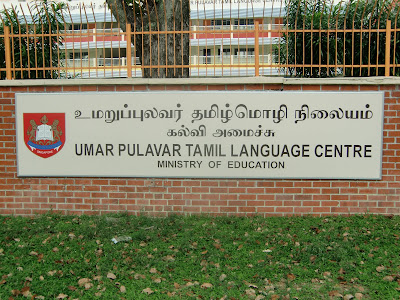follower of teochew porridge stall

whenever i think of teochew porridge, i think of chye buay (preserved cut vegetable), steamed fish, hae bee hiam (chilli fried with dried prawn) , chye poh (salted radish) omelette, tau kee (beancurd strip) with stewed chicken feet, the bland watery, grainy porridge and owen road.
owen road in the 60s and up to the 80s used to be the place where people would zero in for teochew porridge, just like you will head for beach road and geylang for steamboat buffet, lau par sat for malay satay and upper thomson road for roti prata. in the past, we would also head to middle road for steamboat and waterloo street for indian rojak.
the authentic teochew muay or porridge stalls at owen road had a spread of many dishes, some stalls as many as 60 varieties for you to choose from. most, if not all, of these dishes that went with the bland porridge were salty. if it was not salty, like the steamed fish, then you would have to dip it in soya sauce or the fermented bean sauce to make it salty.
in those backlane and low-stool days, there were as many as three shops or stalls selling teochew porridge along that short stretch of owen road between worcester road and race course road. it was so popular that some of the shops/stalls had extensions to the back lane, especially the shops at the two ends. yes, we did sit on low stools sometimes but we did not squat or place our feet on the stools.
we were so besotted with the chye buay at one particular owen road stall that, up to today, whenever or wherever we eat teochew porridge, we will order this dish. if this dish is not available, it just seems that something is missing and that the teochew porridge meal is not complete.
after that owen road stall moved, we looked for teochew porridge elsewhere and found a good replacement at the former lakeview housing estate. one day, while i was at dunlop street, i was happily surprised to find the same man who had been manning the owen road's stall. from then on, we had the option of having teochew porridge at either lakeview or dunlop street. somehow, we preferred the dunlop street stall, the one that had originated from owen road.
the porridge stall at dunlop street moved again. we made enquiries and found out that it had moved to sam leong road, off jalan besar. the quality remained unchanged although the number of dishes appeared to have dwindled.
one day, while having porridge at the stall, we overheard the owners talking about quitting the business. alas, it was not long before we discovered that the stall had been replaced by a bak kut teh stall.
i have been resigned to not having my favourite chye buay and hae bee hiam till the other day when i went to explore geylang. after eating bak kut teh, we were walking to the bus-stop when i saw my 'old friend' at the corner teochew porridge stall at lorong 17. i went up to him to ascertain that he was the same person who had been at owen road, dunlop street and jalan besar.
looks like i would be renewing my acquaintance with my favourite teochew porridge stall.
teochew porridge in the past used to be the fare of the working class although it was not uncommon to see towkays coming in mercedes to join the labourers, trishaw riders and blue collar workers in their overalls at the stall.
today, a bowl of fishball noodle or a plate of wanton mee is cheaper than a teochew porridge meal. today, we pay $16.00 for four bowls (two bowls each) of refreshing porridge with fish (sea bass), hae bee hiam, chye buay and tau kee at the geylang lorong 17 stall.





 picture from national archives of s'pore
picture from national archives of s'pore









 market a
market a






























